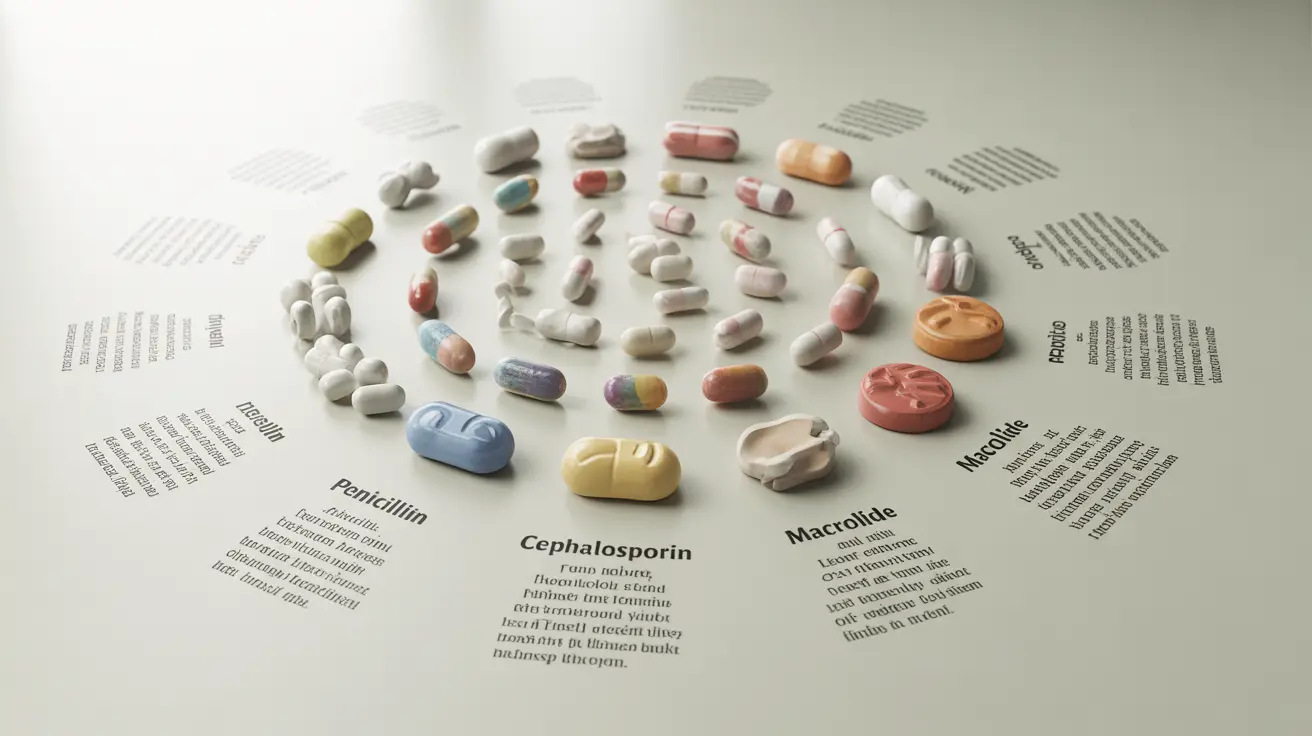Antibiotics are essential medications that help fight bacterial infections, but understanding their different types, uses, and potential effects is crucial for safe and effective treatment. This comprehensive guide will explore the most commonly prescribed antibiotics, their specific uses, and important safety considerations you should know about.
Types of Common Antibiotics and Their Uses
Antibiotics are classified into several major groups, each targeting different types of bacterial infections. Understanding these classifications can help you better comprehend your prescribed treatment.
Penicillins
Penicillins remain one of the most frequently prescribed antibiotic classes. They're effective against many common infections, including:
- Strep throat
- Skin infections
- Ear infections
- Pneumonia
- Sinus infections
Cephalosporins
These antibiotics are often used as alternatives for people who can't take penicillins. They're commonly prescribed for:
- Urinary tract infections
- Respiratory infections
- Skin infections
- Bone and joint infections
Macrolides
Macrolides serve as important alternatives when patients are allergic to penicillin or for specific types of infections. They're particularly effective against:
- Walking pneumonia
- Respiratory tract infections
- Skin infections
- Sexually transmitted infections
Side Effects and Safety Considerations
While antibiotics are generally safe when properly prescribed, they can cause various side effects that patients should be aware of. Common side effects may include:
- Digestive issues (nausea, diarrhea)
- Yeast infections
- Skin rashes
- Fatigue
Recognizing Allergic Reactions
Allergic reactions to antibiotics can be serious and require immediate medical attention. Watch for these warning signs:
- Severe skin rashes or hives
- Difficulty breathing
- Swelling of face, throat, or tongue
- Severe dizziness
- Rapid heartbeat
Proper Use and Antibiotic Resistance
Taking antibiotics correctly is crucial for both individual treatment success and public health. Misuse can lead to antibiotic resistance, making infections harder to treat in the future. Always follow these guidelines:
- Take all doses as prescribed
- Complete the full course of treatment
- Never share antibiotics with others
- Don't save antibiotics for future use
Interactions with Other Medications
Antibiotics can interact with various medications and substances, potentially affecting their effectiveness or causing adverse reactions. Common interactions occur with:
- Birth control pills
- Blood thinners
- Antacids
- Certain supplements
Frequently Asked Questions
What are the most common types of antibiotics and what infections do they treat?
The most common antibiotics include penicillins, cephalosporins, and macrolides. Penicillins typically treat strep throat and skin infections, cephalosporins are often used for urinary tract and respiratory infections, and macrolides commonly treat walking pneumonia and certain respiratory infections.
What are the typical side effects of common antibiotics like penicillins and cephalosporins?
Common side effects include digestive issues like diarrhea and nausea, yeast infections, mild skin rashes, and fatigue. These effects are usually mild and resolve after completing the treatment course.
How can I recognize and respond to an allergic reaction from antibiotics?
Watch for severe skin rashes, difficulty breathing, facial swelling, or rapid heartbeat. If you experience any of these symptoms, seek immediate medical attention. True allergic reactions require emergency care.
Why is it important to complete the full course of antibiotics as prescribed?
Completing the full course ensures all harmful bacteria are eliminated. Stopping early, even if you feel better, can lead to recurring infections and contribute to antibiotic resistance.
Can antibiotics interact with other medications or cause resistance if misused?
Yes, antibiotics can interact with various medications, including birth control pills and blood thinners. Misuse, such as not completing prescribed courses or taking antibiotics unnecessarily, contributes to antibiotic resistance, making future infections harder to treat.




